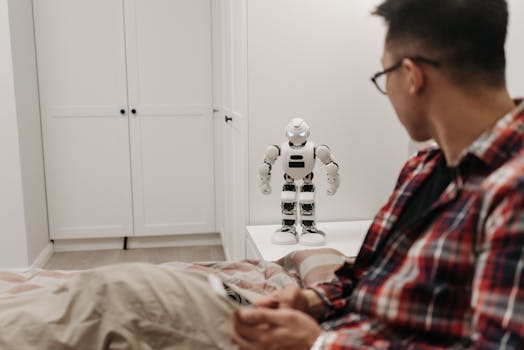
Smart Homes 2025: The Rise of AI-Driven Devices
Smart Homes 2025: The Rise of AI-Driven Devices is revolutionizing the way we live and interact with our living spaces. With the integration of artificial intelligence (AI) and machine learning (ML) technologies, smart homes are becoming more intelligent, automated, and responsive to our needs.
Introduction to Smart Homes
A smart home is a residence that uses advanced technologies to provide occupants with a high level of comfort, convenience, and security. Smart homes use a combination of sensors, actuators, and controllers to monitor and control various aspects of the home, such as lighting, temperature, security, and entertainment systems.
Smart homes have been around for several decades, but the recent advancements in AI and ML have taken the concept to a whole new level. With the ability to learn and adapt to our behavior, smart homes can now anticipate and respond to our needs in a more personalized and efficient way.
AI-Driven Devices in Smart Homes
AI-driven devices are the backbone of smart homes. These devices use AI and ML algorithms to analyze data from various sensors and make decisions in real-time. Some examples of AI-driven devices in smart homes include:
- Smart speakers with voice assistants, such as Amazon Alexa and Google Home
- Smart thermostats that learn our temperature preferences and adjust the temperature accordingly
- Smart lighting systems that adjust the lighting levels and color based on the time of day and our activities
- Smart security cameras that use facial recognition and object detection to identify potential threats
These devices can be controlled remotely using our smartphones or voice commands, making it easy to manage our smart homes from anywhere.
Benefits of Smart Homes
Smart homes offer numerous benefits, including:
- Increased comfort and convenience
- Improved energy efficiency and reduced energy consumption
- Enhanced security and safety
- Personalized experiences and recommendations
Smart homes can also help us to save time and money by automating routine tasks and providing us with real-time feedback on our energy consumption.
Challenges and Limitations
While smart homes offer many benefits, there are also some challenges and limitations to consider:
- High upfront costs and installation requirements
- Dependence on technology and potential technical issues
- Concerns about data privacy and security
- Need for standardization and interoperability between devices
Despite these challenges, the smart home market is expected to continue growing in the coming years, driven by advancements in AI and ML technologies.
Conclusion
In conclusion, Smart Homes 2025: The Rise of AI-Driven Devices is transforming the way we live and interact with our living spaces. With the integration of AI and ML technologies, smart homes are becoming more intelligent, automated, and responsive to our needs. While there are some challenges and limitations to consider, the benefits of smart homes far outweigh the costs. As we move forward into the future, we can expect to see even more innovative and exciting developments in the world of smart homes.






